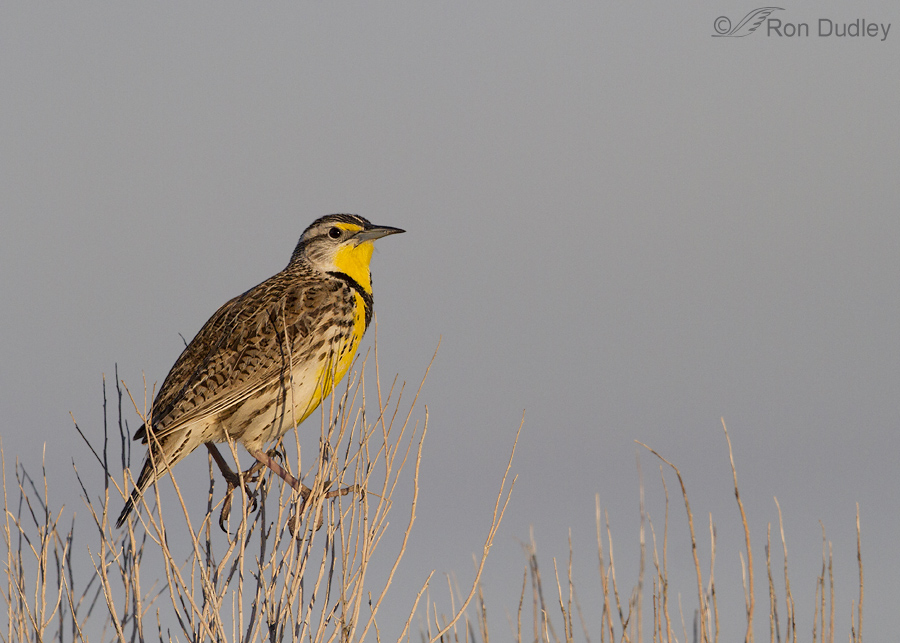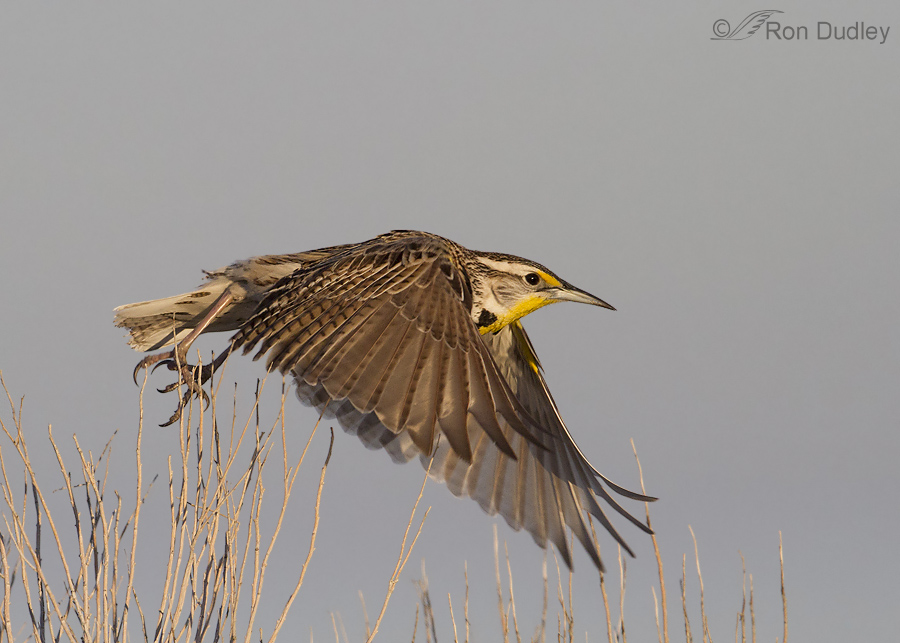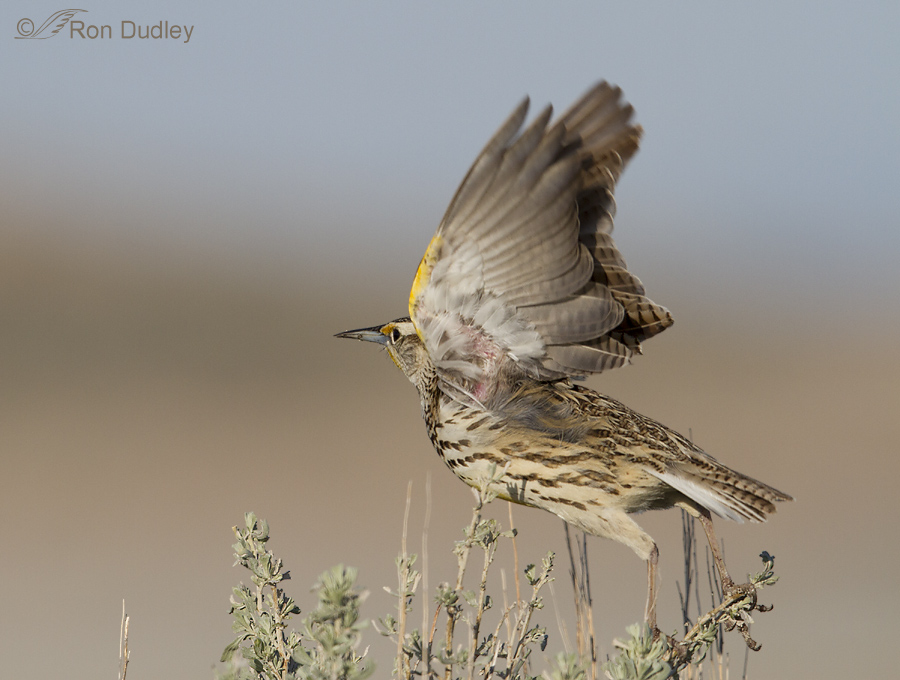When I’m photographing Western Meadowlarks at take-off there’s always one flight posture I hope I don’t get.

1/3200, f/6.3, ISO 640, Canon 7D, Canon EF500mm f/4L IS II USM, not baited, set up or called in
Yesterday morning on Antelope Island this meadowlark was perched atop sagebrush stems in early, warm light. After a few close-ups I removed my teleconverter and prepared for launch. ISO 640 was necessary to get the shutter speed I wanted in this relatively low light.

1/3200, f/6.3, ISO 640, Canon 7D, Canon EF500mm f/4L IS II USM, not baited, set up or called in
As the bird lifted off I got this one shot that I like a lot.
Whenever I’m photographing meadowlarks in flight I’m always hoping to catch the wings in the down (as opposed to up) position because of a peculiar characteristic I’ve noticed about their under-wing plumage.

1/3200, f/6.3, ISO 500, Canon 7D, Canon EF500mm f/4L IS II USM, not baited, set up or called in
Their “armpit” plumage (axillaries) nearly always seems to be so thin and sparse that pink, naked skin is visible, which I find unflattering and distracting (this photo was also taken yesterday morning on the island). When I first noticed this trait a few years ago, in my ignorance I just assumed they were all young birds or molting. But it seems that virtually every time I catch the wings up, no matter the age of the bird or the time of the year, the axillaries are always so sparse that pink skin shows through.
This is something I haven’t noticed in any other species (except in young, recently fledged birds).
All of which makes me wonder if it’s a trait of the species or my observational skills are lacking.
Ron


I think the armpit shot also shows what long legs the bird has.
If that was a young human I would wince and think of careless shaving. And I would be very, very surprised (positively flabber and ghasted) if I believed your observation skills were lacking.
Thanks very much, Elephant’s Child.
That’s actually not so much a lightly feathered wing pit as the main parts of the wing! You’re looking at a pretty much bald humerus (from the body up) and radius/ulna (the part that then takes a left turn up towards the yellow wrist. But you’re right – I don’t remember seeing anything like this in the many birds in the hand I’ve done exams on … odd! I mean, there’s not a LOT of feathers there so you can move them around when looking for bruising or swelling, etc. – but there’s always something.
Strange that I’d see this so often in meadowlarks, isn’t it Louise?
I really admire your outstanding observational skills. I continue to learn so much from you including how to look at and analyse my images in my quest to improve my bird photography.
I’m glad you appreciate the image analysis tips, Sharon. Thanks.
I seriously doubt your observational skills are lacking.
I appreciate your confidence, Ann!
Wonderful shots and interesting observations!
Charlotte
Thanks, Charlotte.